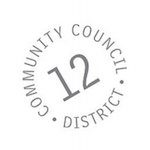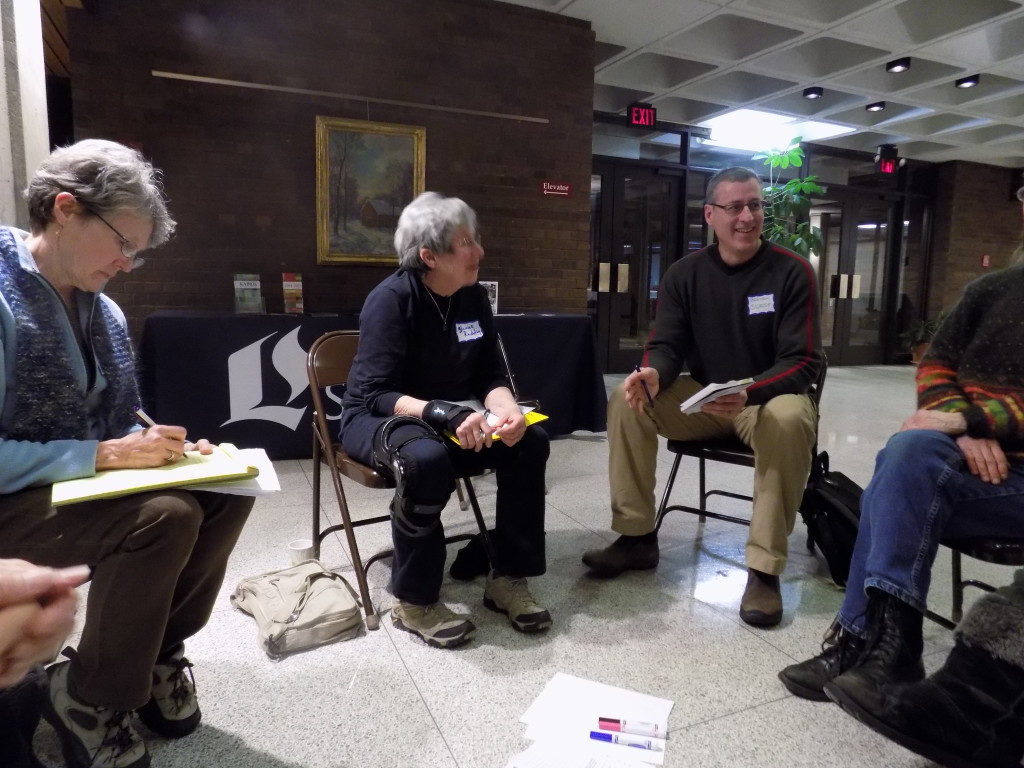Mission
The St. Anthony Park Community Council is where residents and businesses come together on vital neighborhood interests that enhance the quality of life, strengthen the character and vitality of the community, and ensure the effectiveness of government.
Core Values
- Welcoming – all are welcome regardless of any classification or self-identity
- Engagement – all we do is achieved by being and working together
- Community-led – our focus is on the vitality and health of the community and on issues identified and led by the community
- Partnerships –the issues we face require partnerships and each entity has something to offer and is a part of the answer
- Respect – for diversity of opinion, experience, and dialogue processes for reaching agreement
Strategic Vision
SAPCC prides itself on being a welcoming and dynamic organization. Through leadership, action, and alliances with other organizations, the Council serves as a link with city government on matters affecting the community. It facilitates neighborhood unity by providing programs, enabling civic engagement for all community members on issues of their interest, and engaging people in activities that create and sustain a vital neighbored.
SAPCC promotes equitable and sustainable development for private and public projects, both in land use and community connections. It helps shape neighborhood initiatives through public outreach and provides a respectful environment where community issues can be voiced and changes initiated. Over the next five-years, we aim to be more proactive, engaging residents and government through expanded communication activities. These efforts will increase cohesiveness between north and south St. Anthony Park and improve relationships with the City Council. More task forces and ad-hoc groups will reflect an engaged and active community with the means to tackle specific issues. The Council itself seeks to become a stronger advocate for affordable and multi-family housing in the face of rising property values.
SAPCC also will have increased the amount and sources of funding to achieve its strategic goals and be more effective at influencing decisions. It will work to mitigate negative impacts as change occurs and foster greater environmental sensitivity and increased green space in both business and residential areas. It will have a more diverse and representative board, committees, and staff and be better able to measure and report its impact and accountability by adding capacity for community research and documentation of district trends. Finally, the Council itself will have increased visibility within the community, occupy the office and meeting space needed to support its work and that of an engaged community, and provide greater accessibility to all its members.
Strategic Goals
- A strong, sustainable, and respected organization (staff, board, volunteers, policies, processes)
- Review and revise the current committee structure to ensure the best organizational model for achieving the plan.
- Develop processes and skills for effective and respectful communication on issues where dissent may occur (could be training, guidelines, identifying key facilitators, etc.
- Regularly update and enhance the membership database.
- Develop written annual priorities that represent a shared and unified organization.
- Provide livable wages and benefits for staff.
- Establish sustainable practices to ensure environmental protection in day-to-day operations.
- Increase fundraising and research capacities.
- Continue to attract board members that represent the diversity of the community and are interested in evolving and achieving the vision.
- Identify needed skill sets.
- Use affirmative action to recruit members of the board, committees, and staff to ensure the diversity of SAPCC is representative of the District.
- Revamp election process for board to ensure effective and inclusive leadership and appointments.
- Provide cultural awareness/sensitivity training for all staff, board and committee chairs.
- Develop governance policies and procedures for effective operations and clear board/staff roles and responsibilities.
- Develop a board manual to ensure effective succession of staff, board, and committees.
- Maintain a database of information and contacts for critical partners such as development and environmental issues.
- Become more proactive storytellers about the impact of the work and the success and needs of the Council.
- Explore acquisition, lease, or partnerships to provide more effective space to carry out the work of the Council.
- Continue to use fair, informed, and transparent processes for review of zoning and variance requests.
- Continue to use the Land Use Committee’s development guidelines when reviewing development proposals.
- Engagement and Participation as a core principle and practice (communication, awareness, and branding)
- Expand student engagement and involvement with SAPCC through partnerships and service learning projects with neighborhood schools.
- Increase awareness and visibility through branding and marketing initiative regarding the Council, its work, awareness of initiatives, and how to become involved.
- Continue to expand the quality and reach of the e-newsletter and website.
- Explore additional ways people can be contacted and engaged, such as including them as features or contributors to the newsletter, page insert in the Park Bugle etc.
- Increase attendance at the annual meeting to 250.
- Expand the Kasota Pond clean up project and develop a sense of ownership in the community.
- Continue community gardens with designations for targeted new engagement/participation.
- Increase the percentage of recycling with the goal of zero waste.
- Increase civic participation skills in the neighborhood.
- Continue existing annual events while adding a new annual or biennial event that brings together North and South St. Anthony Park.
- Increase communication with those living in multi-family facilities and culturally specific churches/groups.
- Strengthen communication specifically to those who did not participate in the survey.
- Identify opportunities for use of kiosks or other public places where information and Council “presence” can be sustained.
- Equity in all we do
Diversity includes but is not limited to, age, ethnic origin, national origin, race, color, sex, sexual orientation, marital status, disability, religious beliefs, creeds and income. SAPCC also is committed to the inclusion of those not traditionally equitably represented in District 12.
-
-
- Create a Diversity/Inclusion Board of Directors Standing Committee to build our organization’s capability to execute the long-range inclusion plan:
- Increase diversity of the staff, board, committees, and volunteer population.
- Assess the level of intercultural competency of staff and board, and design tools to increase and develop the competency.
- Ensure all board and committee members have training in cultural competence.
- Ensure that diversity is represented in all written and electronic communications.
-
- Learn which cultural groups live here and determine how best to represent, engage, and serve them.
- Determine points of contact for various cultural groups and develop relationships with them.
- Annually evaluate our diversity/inclusion initiative activities using board-approved metrics.
- Increase the number of people from diverse and underserved populations participating in our programs and Council activities.
- Develop a “welcome to the neighborhood” packet and distribute it to new neighbors.
- Develop accessible tools and information.
- Translate key documents into additional languages (using City policy as the foundation).
- Identify community members that can serve as translators to link/communicate between cultural community members and the Council.
- Develop and distribute a contact list for specific social services.
- Reduce barriers to participation in Council activities.
- Provide childcare, transportation, and translation services for Council activities.
- Increase awareness, build mutually rewarding relationships, and foster collaboration between diverse communities and those traditionally represented in District 12.
- Improve economic equity by increasing advocacy in specific areas.
- Affordable housing and choices of housing options.
- Fair access to transportation.
- Employment opportunities and equitable local hiring.
- Local business preservation as development occurs.
- New and strengthened strategic partnerships (nonprofit organizations, advocacy groups, city)
-
- Develop/strengthen partnerships with critical groups, specifically:
- Hampden Park Coop
- University of Minnesota Community Relations
- Luther Seminary
- St. Anthony Park Community Foundation
- Union Park
- Hamline Midway
- Southeast Como Improvement Association
- Prospect Park East River Improvement Association
- CURA program at the U of M
- St. Anthony Park Public Library
- Creative Enterprise Zone
- Develop or strengthen relationships with sustaining non-profit service providers, specifically:
- Aeon
- Nexus
- Transit for Livable Communities
- HOME Line
- Lutheran Social Services
- St. Anthony Park Area Seniors
- Children’s Home Society
- Goodwill
- Emily Program
- Engage the Metro Independent Business Association and minority-owned businesses in the neighborhood.
- Ensure schools have at least one SAPCC point of contact.
- Build relationships with all churches for engagement, organizing, and informational partnerships.
- Partner with county and city entities to minimize road design and overlay impacts for both residents and businesses.
- Improve relationships with the City of St. Paul.
- Financial investment and capacity
-
- Increase the operational budget to achieve the vision.
- Ensure 100% giving by board members at levels they can afford
- Grow the individual donor base to 15% of the operating budget.
- Establish a targeted campaign for sustaining donors
- Increase grants and targeted funding such that the combined sources of individual contributions and grants will be 75% of budget.
- Demonstrate value to the City to ensure continuity of its funding to the SAPCC.
- Study the viability of an estate (planned giving) program.
- Establish an investment policy.


